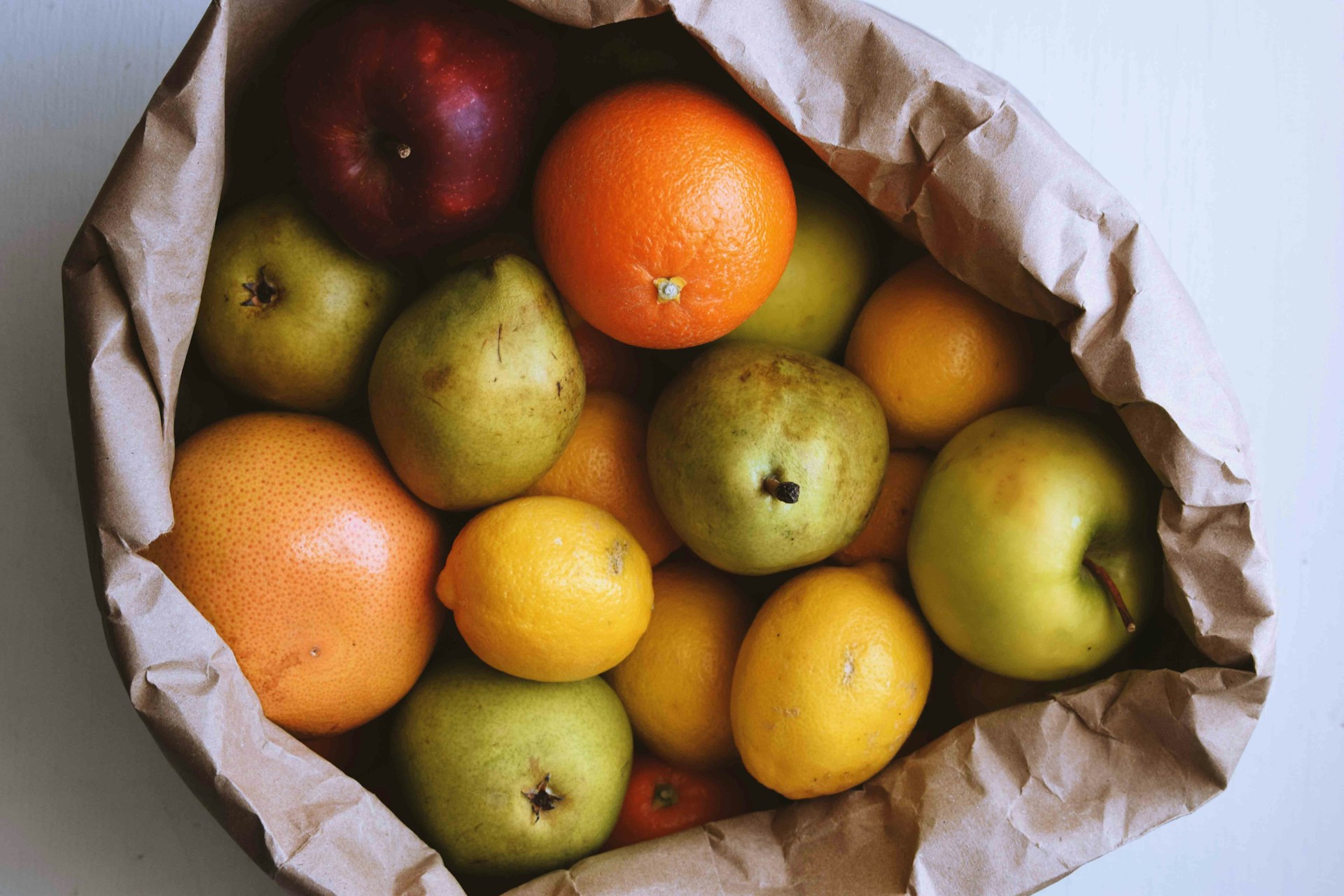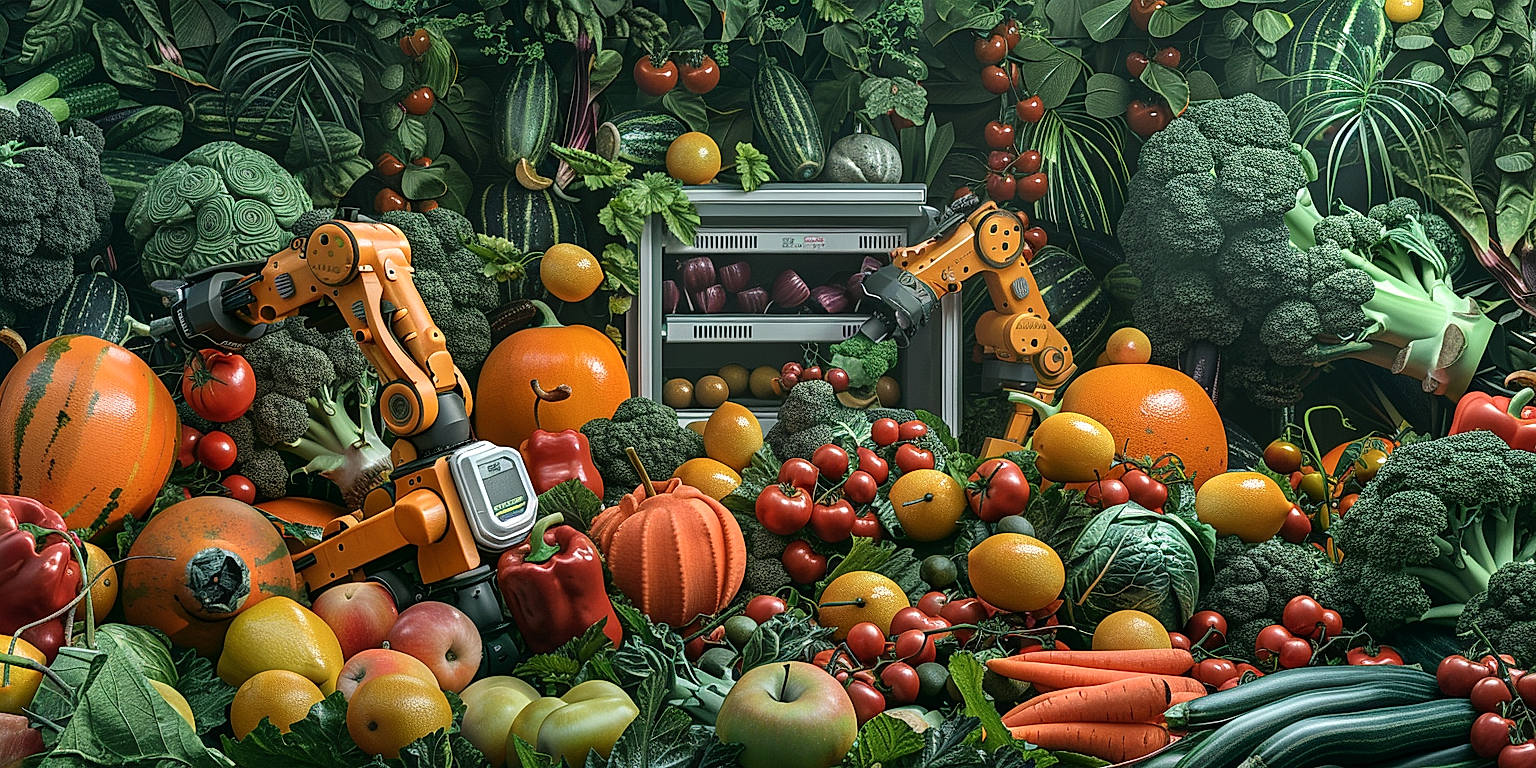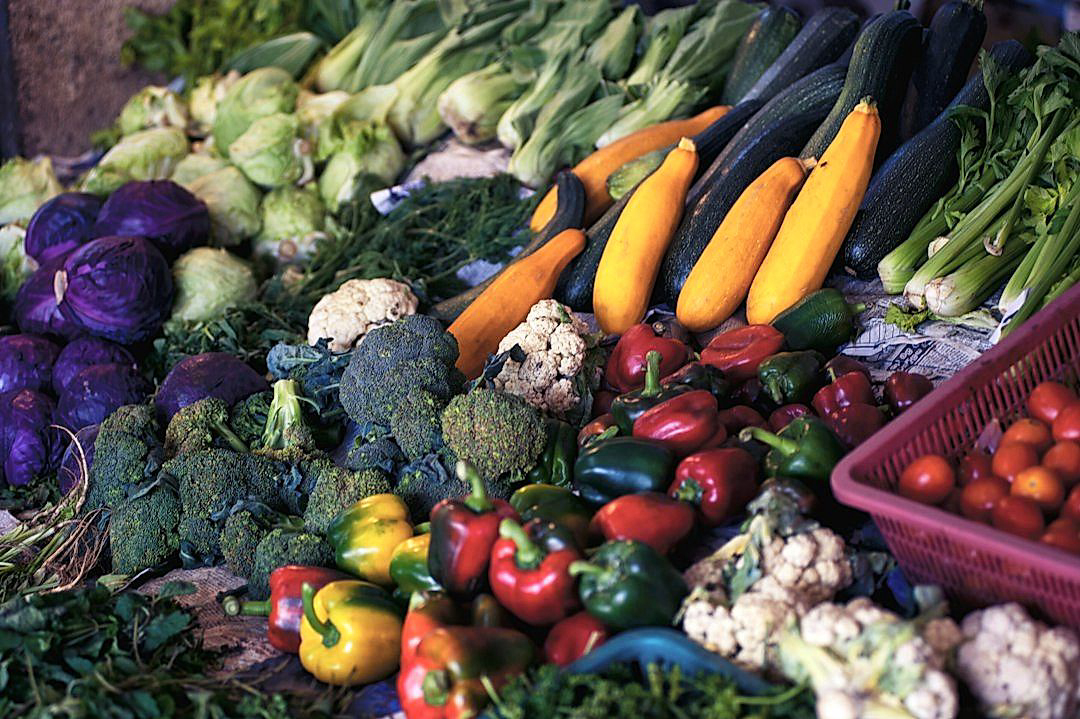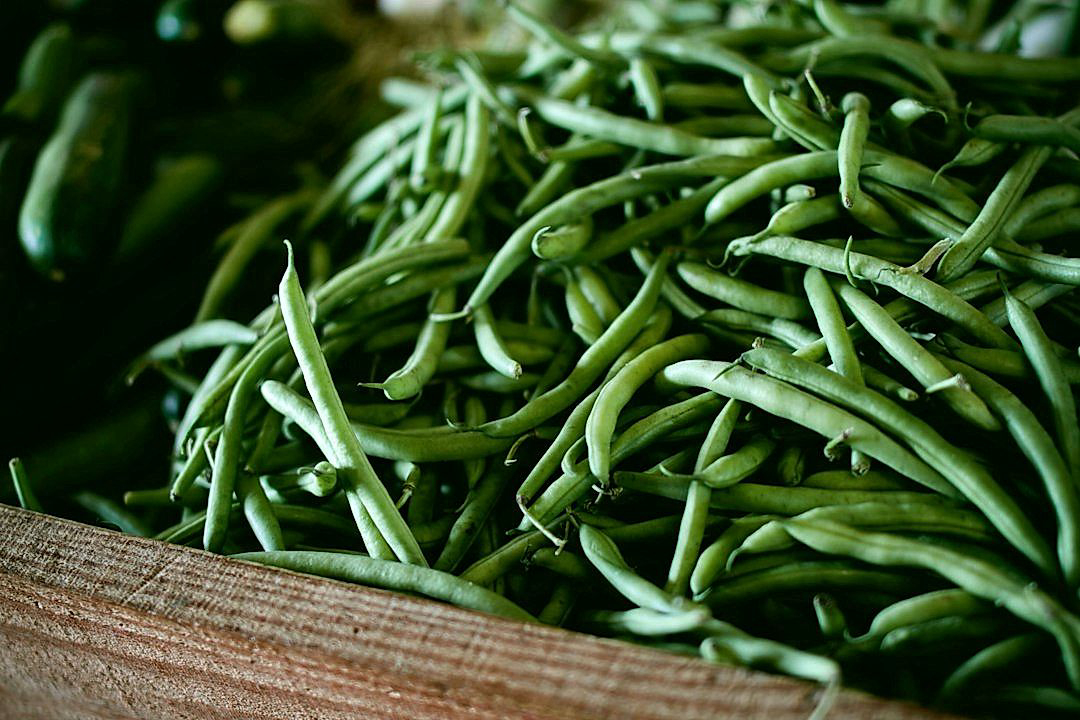In a rapidly evolving world, the efficacy and efficiency of produce distribution play a pivotal role in global trade.
Drawing on the vein of advancements in technology, the transportation aspect of this process has taken several innovative leaps in recent years.
These innovations aim to rectify challenges, heighten productivity, and ensure the freshest delivery of produce.
Our task, then, is to delve into the intricacies of these novel techniques in the realm of transporting fruit, vegetables, and other perishable goods.
Within this intricate web of logistics, vital changes are being implemented that fundamentally alter the way we approach this critical sector.
Let us collectively explore these remarkable transformations, assessing their impact on the sustainability and economy of produce distribution.
Contents
- Innovations In Produce Distribution Transportation
- 1. Autonomous delivery vehicles for produce transport
- 2. Blockchain Tracking for Farm-to-Table Transparency
- 3. Cold chain monitoring with IoT sensors.
- 4. Drone Delivery for Farm Produce
- 5. Solar-powered refrigerated trucks for transit
- 6. Optimized routes using machine learning algorithms
- 7. Advanced packaging solutions for longer shelf life.
- The Bottom Line
Innovations In Produce Distribution Transportation
1. Autonomous delivery vehicles for produce transport
One of the most significant technological advancements reshaping the landscape of produce transportation is the implementation of autonomous delivery vehicles.
Also known as self-driving trucks, these delivery vehicles operate electronically and offer a potentially more effective means of produce delivery in comparison to traditional methods.
Efficiency is a crucial factor in the distribution of both fresh and processed fruits and vegetables, and autonomous vehicles promise to increase this substantially.
These vehicles have the potential to significantly reduce costs associated with fuel and labor, thus making fresh produce more accessible and affordable to consumers.
Furthermore, autonomous vehicles are not limited by factors such as the need for rest and other human-related considerations, thus they can contribute towards a 24/7 service delivery system.
The widespread adoption of these autonomous delivery vehicles is yet to be fully realized, however, the interest and investment they have garnered are evident of their potential to revolutionize produce transport.
While there are still legal and logistic obstacles to overcome, the future of produce delivery through autonomous vehicles holds much promise.
Some of the benefits associated with their use go beyond cost and time-saving to supporting a sustainability agenda.
Eliminating human error during delivery can significantly increase safety, potentially reducing road accidents and promoting safer traffic conditions.
This does not only apply to the vehicles themselves, but also their impact on infrastructure. There is the potential for these vehicles to reduce congestion and improve road condition, further contributing to safety and efficiency.
Moreover, companies adopting these vehicles are not just making an economically sound decision, but they are also demonstrating a commitment to moving forward with the latest technology.
Produce distributors are in dire need of disruptive and, at the same time, practical solutions, and autonomous delivery vehicles perfectly fit the bill.
The utilization of autonomous delivery vehicles could mean that there will no longer be a delay due to driver fatigue or limited driving hours, and therefore, fresh produce would reach consumers quicker.
While it’s clear that autonomous vehicles have enormous potential, it’s also crucial to approach this development with a level of realism and caution.
It is important to balance excitement and optimism about this technology with the realities of regulation, safety, and public acceptance.
Nevertheless, as this technology continues to progress and evolve, so will its potential to redefine the way we transport and distribute produce.
Despite the challenges that lie ahead, one fact remains clear: the significance of autonomous delivery vehicles in the future of produce distribution cannot be overstated.
2. Blockchain Tracking for Farm-to-Table Transparency
Within the field of fresh produce distribution, innovations have emerged to address issues of supply chain transparency, one of the most notable being the adoption of blockchain technology.
Blockchain technology, a digital ledger renowned for its security, is being used to map the journey of produce from farms to end-user tables.
Recording every step of the supply chain on blockchain offers consumers the assurance that what they are buying came directly from a particular farm, offering an entirely new level of transparency.
Embracing blockchain in agriculture allows stakeholders to precisely track the origin, quality, and overall journey of their food, fostering trust in the food system among consumers.
By being able to visualize the supply chain, consumers can feel more confident about purchases, ensuring them of the product’s safety and freshness.
In addition, transparency brought by this technology can discourage food fraud and unintentional mishaps, reducing cases of foodborne illnesses and subsequent recalls.
For farmers, this advancement allows them to market their crops based on their reputation and quality, giving them a competitive edge in a challenging market.
Agri-tech companies have started developing blocked-based platforms for farmers, enabling them to upload data pertaining to crop cultivation, farming practices, and harvesting times.
These platforms are highly intuitive, with features for uploading documents, photographs, certifications, and lab results, reinforcing the claim of farm-to-table transparency.
In the future, the integration of smart contracts could automate various elements of the supply chain, such as payments, once certain conditions are met in the blockchain recorded details.
This automation can reduce overheads and increase profits by cutting down time-consuming manual paperwork and making the distribution process more efficient.
Moreover, the use of blockchain technology has the capacity to promote sustainability in the farming sector, not just economically but also environmentally and socially.
Its high levels of data integrity can give consumers the confidence to pay premiums for those products that have been verifiably sourced from sustainable farming practices.
Moreover, the transparent and immutable nature of blockchain can hold entities accountable for their environmental practices, pushing them to adopt greener strategies.
Overall, blockchain tracking for farm-to-table transparency is a promising innovation in produce distribution transportation, potentially revolutionizing the entire agriculture sector.
3. Cold chain monitoring with IoT sensors.
The integration of Internet of Things (IoT) sensors within the cold chain has massively overhauled the produce distribution process.
By enabling real-time tracking of temperature-sensitive products, these sensors provide crucial data that is required to uphold the integrity of perishable goods during transit.
This innovative application of technology is reshaping the way fresh produce is transported from farms to consumers’ dining tables.
The use of IoT sensors in cold chain monitoring is paving the way for unmatched levels of quality control, efficiency, and transparency.
The traditional approach of manual temperature monitoring and hand-written logs are now being replaced with automated, digitally connected IoT devices.
These devices transmit temperature data in real-time to a cloud-based platform, ensuring immediate action can be taken to adjust temperature controls in the event of a variance beyond set parameters.
This highly accurate system avoids the risk of spoilage, ensuring the freshness and safety of the produce on arrival.
The IoT sensor technology is also enabling the transition to a proactive approach in produce transportation.
This is since it can predict potential risks and failures within the cold chain based on the collected data before they occur.
Using machine learning algorithms, it even gives logistics providers the capacity to improve their operations based on historical data.
Moreover, IoT devices can also monitor other parameters such as humidity, light exposure, and vibration that can affect the produce quality during transit.
Through this comprehensive monitoring, it becomes possible to certify the quality of transported products and comply with the strict regulations in place for the cold chain.
This data can be shared with all stakeholders, including customers, adding a new layer of transparency and trust to the distribution process.
Furthermore, the use of IoT sensors in cold chain operations is contributing to sustainability efforts within the transportation industry.
By optimizing temperature control and reducing spoilage, it minimizes energy usage and wastage, aligning with the global aim of locating more environmentally friendly solutions within supply chains.
This technology is not just a tool for effective transportation but is evolving as a vital cog in the wheel of future farming practices and the deliverance of quality produce to consumers.
4. Drone Delivery for Farm Produce
When discussing innovations in produce distribution transportation, drone delivery for farm produce is a standout topic.
Drone deliveries have drastically disrupted conventional means of transporting farm produce, thanks to their speed, efficiency, and cost-effectiveness.
Traditional delivery systems, such as trucks and other road vehicles, face multiple challenges like traffic congestion, mechanical breakdowns, and varying road conditions, which can impact the freshness and quality of the produce.
Drones, on the other hand, provide a direct route to the destination, significantly reducing transit time and preserving the freshness of farm produce.
These devices are equipped with advanced GPS systems, allowing highly accurate delivery to the specified locations.
Moreover, they are equipped with specialized compartments designed to maintain the temperature and humidity levels, ensuring the produce remains fresh throughout the transit.
Accordingly, farm produce like fruits, vegetables, and dairy products can be delivered directly to restaurants, stores, and homes safely and effectively.
Innovation is also apparent in the capacity and range of delivery drones, which continues to expand with advances in technology.
For instance, some drones now have the ability to lift and transport heavier loads over longer distances, transforming the way farm produce is distributed.
With the integration of real-time tracking systems, consumers can track the progress of their delivery, adding an extra layer of convenience and transparency.
The implementation of drone delivery systems is, however, not without its challenges.
Regulatory and safety concerns pose a significant barrier and guidelines for drone operations are still being developed and finalized across the globe.
Despite these challenges, the potential for drone delivery systems in farm produce transportation seems promising, with several companies already implementing pilot programs.
Through continuous innovations and technological advancements, drone delivery systems are expected to play a crucial role in reshaping the future of produce distribution transportation.
5. Solar-powered refrigerated trucks for transit
In the realm of produce distribution transportation, the rise of solar-powered refrigerated trucks is an innovation worth noting.
These futuristic vehicles fuel their cooling systems with energy generated through solar panels, placed optimally to catch sunlight.
This technology combats the inefficiencies of traditional delivery trucks, which burn non-renewable fossil fuels to keep the cargo cold.
By leveraging the power of the sun, solar-powered refrigerated trucks offer an eco-friendly solution, significantly reducing greenhouse gas emissions from the transportation industry.
Moreover, the fact that solar-energy is both renewable and free significantly reduces the operating cost of these vehicles.
Such cost reductions could ultimately be passed on to consumers in the form of lower produce prices.
This technology also ensures that the cooling of the refrigerated compartments is not interrupted when the truck engine is turned off, thus maintaining consistent produce quality.
Furthermore, these trucks capitalize on the flexibility of solar energy, as they can operate independently of the grid.
This enables produce deliveries to remote areas where power reliability might be an issue, further expanding the accessibility of fresh produce.
These vehicles also serve as a source of emergency power during outages, due to their inherent ability to generate and store power.
Many companies are exploring ways to implement this technology into their fleets, acknowledging its potential impact on the environment and bottom line.
For instance, firms like EcoFridge have developed transit solutions that combine solar technology with sophisticated, energy-efficient refrigeration units.
Additionally, some companies offer retrofitting services, installing solar panels onto existing refrigerated trucks.
It’s becoming clear that the future of produce distribution transportation lies in innovations like solar-powered refrigerated trucks that marry efficiency and sustainability.
As the technology continues to evolve and be optimized, it’s likely that solar-powered refrigerated trucking will become a common standard in produce delivery.
Embracing such technologies align with the global push towards greener logistics and supply chain management, essentially contributing to the collective effort to combat climate change.
6. Optimized routes using machine learning algorithms
In the current age of technological advancement, the produce distribution transportation sector has also undergone significant transformation.
This transformation is primarily driven by the application of machine learning algorithms in various aspects of the distribution process.
This article focuses on the use of machine learning algorithms in optimizing routes for produce distribution transportation.
The major focus lies on how these algorithms enhance efficiency and save costs in the transportation process.
Machine learning algorithms leverage historical data combined with complex mathematical models to make predictions and optimize processes.
In the case of produce distribution transportation, they can be used to predict the most effective routes for distribution.
This not only enhances the speed of delivery but also leads to significant cost savings through reduced fuel consumption.
The algorithms use real-time data on weather conditions, traffic congestion, road construction, and other factors to continuously update the optimum route.
This helps in ensuring that produce is transported in the most efficient and timely manner.
Machine learning algorithms also consider several other logistical concerns such as loading times, driver’s hours, size and weight of the cargo, and warehouse capacity in optimizing the routes.
Adoption of machine learning for route optimization in produce distribution implies embracing predictive analytics for smarter operations.
The machine learning systems improve consistently over time, thus the route optimization becomes increasingly precise and efficient.
This technology not only offers immediate benefits but also opens up the potential for future innovations in the produce distribution transportation sector.
From a broader perspective, it contributes to the overall sustainability of the sector by reducing the carbon footprint associated with produce distribution transportation.
Machine learning algorithms may require an initial investment for their implementation, but the efficiencies they introduce have the potential to offset this investment in the long run.
Overall, machine learning algorithms are revolutionizing the produce distribution transportation sector by optimizing routes, reducing costs, improving efficiency, and driving sustainability.
7. Advanced packaging solutions for longer shelf life.
Given the perishability of produce, distribution companies are consistently exploring advanced packaging solutions to extend the shelf life of their products.
The main goal is to minimize spoilage in transit and keep freshness intact until the product reaches the consumer’s plate.
Among the innovative solutions emerging in the market are the active and intelligent packaging technologies.
Active packaging addresses the alterations in the product’s environment, for example, through oxygen scavengers or moisture absorbers.
It can thereby delay deterioration, maintain product quality, and extend the product’s shelf life.
On the other hand, Intelligent packaging is designed to monitor the condition of the product and the surrounding environment during transport.
Intelligent packaging allows categorial monitoring, thereby ensuring the product’s freshness and triggering alerts if any significant changes occur during transit.
These innovative solutions not only provide robust packaging but also ensure the product’s freshness, taste, and quality when it reaches the consumer.
Moreover, companies are also researching and developing edible, biodegradable, and compostable packaging materials.
Such biodegradable packaging reduces waste and the environmental impact, aligning with the increasing demand for sustainable produce distribution solutions.
Nanotechnology-based packaging is yet another advanced solution making its way in produce transportation.
It includes nanoparticles that could potentially kill bacteria, improving the product’s safety and extending its shelf life.
Companies can also leverage machine learning and artificial intelligence to optimize packaging designs and materials for specific categories of produce.
The growing use of these innovative technologies reflects the broader trend of digital transformation in the produce distribution sector.
With such advancements, companies aim to fortify their produce distribution chains to ensure optimum quality to the final consumer.
Therefore, it is clear that investing in advanced packaging solutions plays a significant role in reshaping produce distribution transportation.
The Bottom Line
The seamless integration of advanced technology within the agricultural supply chain is revolutionizing farm produce transportation.
Whether it’s the use of autonomous delivery vehicles, or leveraging blockchain for transparency, the shift towards digitization is evident and promising.
Integrated IoT sensors for cold chain monitoring, along with drone technology for delivery, further emphasize the potential of these innovations.
With solar-powered refrigerated trucks drastically reducing emissions and machine learning algorithms optimizing routes, the sustainability and efficiency of the field are taking wide strides.
Furthermore, innovative packaging solutions promise a longer shelf life for produce, thereby reducing waste.
To sum it up, the future of farm produce transportation is marked by technological advancements that not only assure efficiency and quality but also integrate sustainability and transparency.




